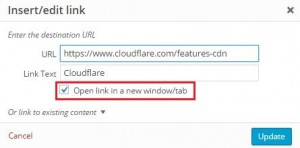 Google defines bounce rate as the “percentage of visitors” that leave your site from a landing page “without interacting with it.” Watch this funny and educational video by Google’s Digital Marketing Evangelist, Avinash Kaushik, calls bounce rate the “sexiest metric ever” and is a huge fan of it. As Avinash mentions, bounce rate is important for your inside pages also, not just your homepage.
Google defines bounce rate as the “percentage of visitors” that leave your site from a landing page “without interacting with it.” Watch this funny and educational video by Google’s Digital Marketing Evangelist, Avinash Kaushik, calls bounce rate the “sexiest metric ever” and is a huge fan of it. As Avinash mentions, bounce rate is important for your inside pages also, not just your homepage.
A high bounce rate is often a sign that the user experience needs improvement. If your site isn’t getting the engagement you want, try these tips for lowering your bounce rate:
1. Optimize Speed to Reduce Bounce Rate
The old adage that “good things come to those who wait” doesn’t apply to the Internet. Users want information right away and will leave any site that takes more than a few seconds to load. You can speed your site up by:
* Using a Content Delivery Network (CDN) like Cloudflare. This will distribute your content so it’s closer to your visitors, thereby speeding up your site.
* Creating thumbnail images that can be clicked on rather than displaying smaller versions of full-sized images
* Implementing a responsive or adaptive style to accommodate all screen sizes
2. Write for Skimmers
The modern web user tends to skim through text rather than reading everything on page, and seeing line after line of words is a big turn-off. Make your articles and blog posts more appealing by breaking the content up with bold subheadings and bullet lists that draw the eye to different sections.
3. Deliver on Your Promises
The keywords that bring people to your site must lead them to content that is relevant to their original search. Whether it’s useful information, a particular product or a special deal, make sure they find what they want the moment they arrive. Create landing pages for promotions, provide high-quality content in articles and blog posts and include a clear call to action to grab attention.

4. Practice Smart Linking
Links to useful external sources are good as long as they don’t direct people away from your content completely. Set links to open in new windows or tabs (by adding target=”_blank” to your links) so that visitors stay on your site even while checking out other information.
5. Go Mobile
Mobile users want sites that are easy to see, read and navigate on their devices. Since mobile use is quickly outpacing desktops and laptops, you’re going to lose a lot of traffic if you don’t offer a mobile-friendly environment. Make sure that your text is readable on small screens and that all buttons and links can be clicked with one tap.
By implementing these simple site updates, you should see more engagement, more shares and greater conversions whether you run a blog or a business.
